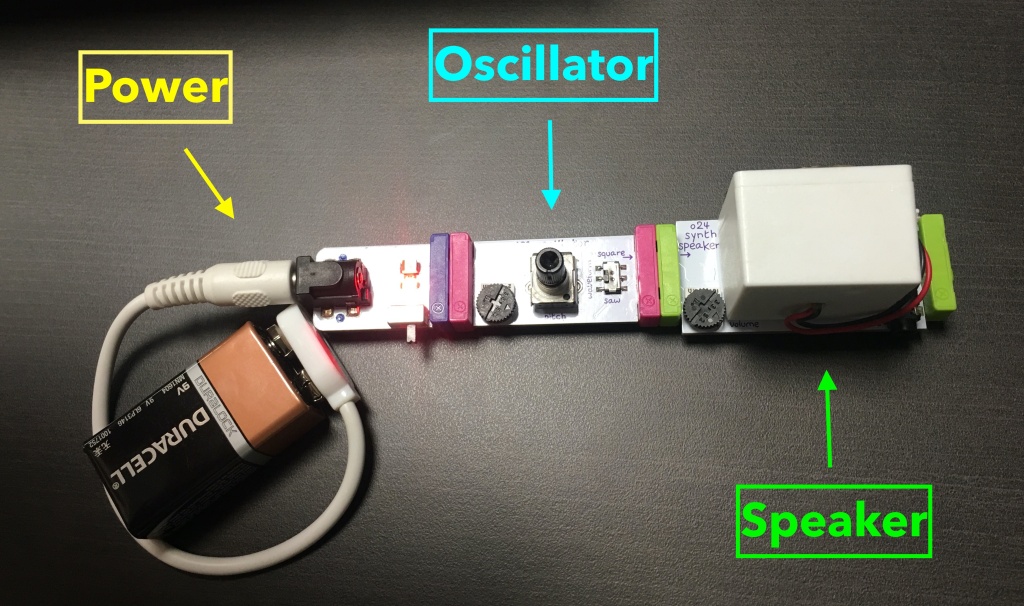Creating a Synth
How is sound produced on synthesisers? This is how!
Power -> Oscillator -> Speaker

Basically what happens is the current (from the power) gets transferred as waves of signal (in the oscillator) to be produced as air vibrations/sound (from the speaker).
In class we experimented with the ‘LittleBits Synth Kit‘ which is an analog synthesiser you can attach and detach ‘bits’ to create different sound effects. You could add ‘triggers‘ such as ‘keyboard’ or ‘sequencer,’ or ‘effects‘ which were ‘delay,’ ‘filter’ and ‘envelop.’ These ‘triggers‘ or ‘effects‘ would change the sound through frequency (pitch), attack and release time, waveform(timber), or peak(resolution). We enjoyed our time changing the the ‘bits’ and sounds created.

CODING MUSIC
Guest Speaker: Rowena Stewart
Now you’ve probably seen and heard lots of cool things on the internet, but have you ever seen music… created from coding!? Well, it’s out there and it called ‘SonicPi!’ Rowena Stewart, a coding expert, introduced ‘SonicPi’ which is a free program developed by Sam Aaron. As coding has become very popular and is being taught in many schools, we can take advantage of this and teach students of another creative way of composing music.
Here is a example of ‘SonicPi’:
- Download SonicPi at https://sonic-pi.mehackit.org/